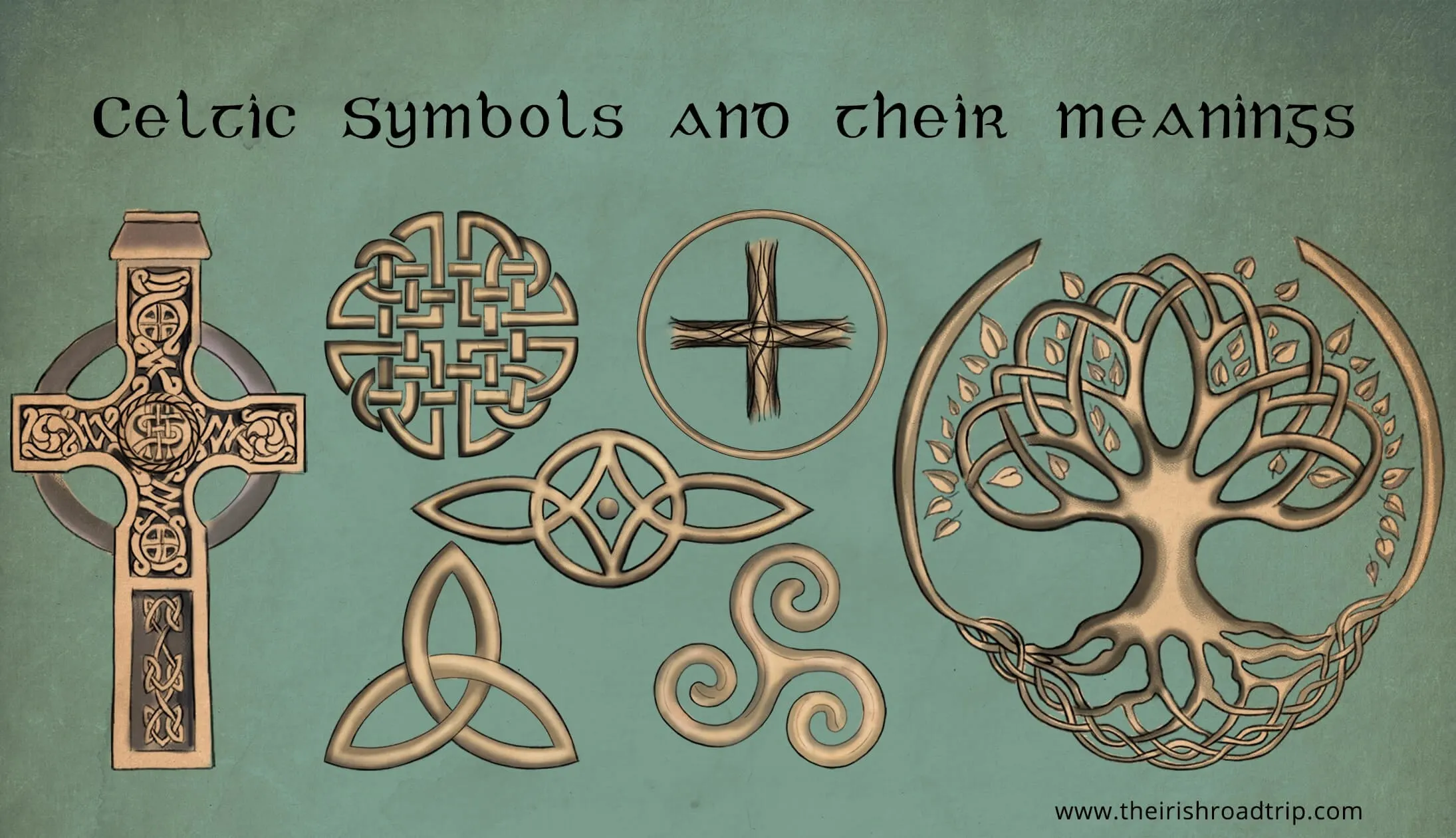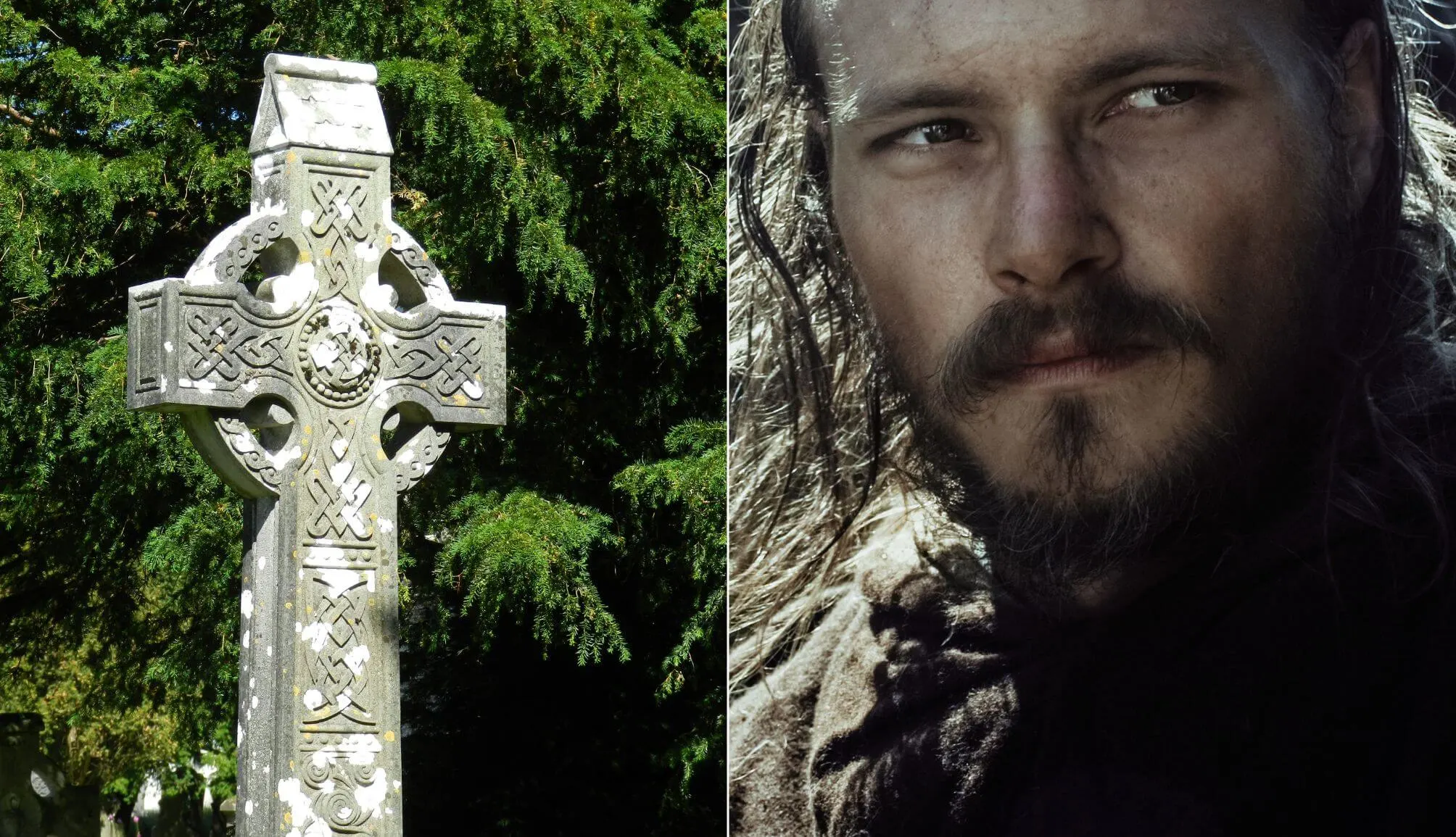Who were the Celts? In a nutshell, they were an Indo-European people that were defined by their use of Celtic languages.
One of the largest misconceptions is that the Celts were a tribe that lived across the British Isles and that spoke the same language.
The reality is that the Celts came from across much of Europe and part of modern-day Turkey and it was the Celtic languages that defined this group of people.
In the guide below, you’ll find:
- A 30-second insight: The first section answers ‘Who were the Celts’ quickly, but with adequate detail
- The story of Celtic people: The second section goes more in depth and looks at where they came from, etc.
Some quick need-to-knows about the Celts

In this section, you’ll find the quick answers to ‘Who were the Celts?’, for those of you that just want to get up-to-speed quickly. We go into more detail then further on.
1. Who were the Celts?
The Celts were Indo-European people that shared a common language and that had a shared culture and belief system. They lived in large sections of modern-day Europe and Antolia, a peninsula in modern-day Turkey. There were a number of major Celtic groups, including the Celtiberians, the Gaels, and the Gauls.
2. Where did the Celts come from?
There are numerous theories about where the Celts came from, with some believing that they originated from the Urnfield Culture and others believing they came from along the Atlantic, with the Bell Beaker Culture. More info below.
3. What did the Celts look like?
It’s important to note that the Celts wouldn’t have all looked like they were part of one tribe – remember, they were spread across Europe and lived in vastly different climates and conditions. According to Greek historian Diodorus Siculus, the Gauls (a group of Celts) were ‘tall of body with rippling muscles and white of skin and their hair is blond’.
4. The first recorded mention of the Celts
The first time the Celtic people were referred to as ‘Celts’ in recorded history was by a Greek historian called Hecataeus of Miletus, who lived between 550 BC and 476 BC. In 517 BC, he wrote about the ‘Keltoi’ – a group of people living in Donaueschingen in Germany, near the source of the Danube River and in parts of Western Europe.
Who were the Celts

Answering ‘Who were the Celts?’ isn’t a quick-and-easy task. However, I am going to offer the clearest insight I can into who they were and where they came from.
I’ll mention language many times in this guide, and for good reason, as it’s what made the Celts ‘Celts’.
Who exactly were they
The people that we now know as the ‘Celts’ were a large, widely spread group of Indo-European people that inhabited significant portions of Europe and Antolia, a peninsula in modern-day Turkey.
They weren’t one large tribe that interacted – there were many groups of Celts, some major, like the Gauls, and some minor. They spoke Celtic languages and shared a similar culture.
The main Celtic groups
Although there would have been many different groups of Celtic people living throughout Europe and Antolia, there were a handful of major groups of Celts. They were:
- The Gauls: Lived in what is now France, Belgium, Switzerland, Southern Germany, Czech Republic and Austria from 5th century BC to 5th century AD
- The Celtic Britons: Lived in Great Britian from the British Iron Age to the High Middle Ages
- The Celtiberians: Inhabited the Iberian Peninsula (Spain and Portugal) during the final centuries BC
- The Gallaeci: Lived in parts of the north of Portugal
- The Picts: Inhabited northern Britain during the Early Middle Ages
- The Gaels: It’s unknown when they arrived, but they inhabited Ireland, Scotland and the Isle of Man
- The Galatians: Inhabited Anatolia in modern day Turkey between 323 BC and 30 BC
- The Boii: Inhabited modern day Northern Italy, Austria, Hungary, Bavaria, Poland and Slovakia during the Late Iron Age
The different Celtic languages
Although the Celts were characterised by their cultural similarities, it was the Celtic languages that really defined this group of people, so let’s tackle them first.
It’s believed that Proto-Celtic, which was spoken between 1300 and 800 BC, was the original language of the Celts and it was from this that all other Celtic languages stemmed from.
Although there would have been many Celtic languages, only six remain in use to this day:
- Irish: Which was the first language of Ireland
- Breton: Spoken in Brittany in France
- Welsh: Spoken in Wales
- Scottish Gaelic: Native to the Gaels of Scotland
- Manx: Spoken by some on the Isle of Man
- Cornish: From Cornwall in England
Parts of the world the Celts inhabited

Map by QuartierLatin1968, CC BY-SA 3.0, via Wikimedia Commons
Before we look at where the Celts came from, let’s take a minute to look at what parts of the world they inhabited.
The territories of the ancient Celts were mainly in what we know as modern-day Europe. These are the areas that the Celts inhabited:
- Central and Eastern Europe: The Celts were present in what is modern-day Germany, Austria, Croatia, Poland, Slovakia, Serbia, the Czech Republic
- The Iberian Peninsula: The Celts inhabited the peninsula that is now home to Spain and Portugal
- Italy: North Western Italy, in particular
- Great Britian: The Celts were present here from at least the British Iron Age
- Gaulish regions: Like France, Belgium, Luxembourg, and parts of Switzerland and the Netherlands
Where the Celts came from

It is important to note from the beginning that, to-this-day, scholars debate where the Celts came from originally.
While there are many different theories both new and old, there are three ‘main’ theories about their origin.
Theory 1: The Urnfield-Hallstatt/Celts from the East theory
In a nutshell, this theory believes that the Celts originated from what is known as the ‘Urnfield culture‘. This was a culture from the late Bronze Age (1300 – 750 BC) that was practised in Central Europe.
The name comes from a tradition of cremating those that passed away. The remains would then be buried in urns.
Urnfield culture was followed by ‘Tumulus culture‘, which was the custom of burying those that passed beneath burial mounds. This was practised in Central Europe during the Middle Bronze Age (1600 – 1300 BC).
What followed was the ‘Hallstatt culture‘ in Central and Western Europe during the Late Bronze Age (800 – 500 BC). This culture revolved around metal-working and farming. There was an importance on social status, with chieftains, upper classes and.
Theory 2: The Celts from the West theory
Another theory on where did the Celts come from emerged in the 20th century and it was influenced by new archaeological discoveries.
At its core, it argued that Celtic languages came from a much earlier period and they originated along the Atlantic, in the likes of Ireland, Britian and Iberia.
In their book ‘The Celtic Realms’ (1967), Myles Dillon and Nora Kershaw Chadwick, argued that the Celtic settlement of the Brisish Isles may date back to the Bell Beaker culture.
This was a culture that earned it’s name from the bell-shaped ‘cups’ that were used for drinking in the European Bronze Age, around 2800 BC.
Theory 3: The Celts from the Centre theory
The third most popular theory on where the Celts came from is from a Celticist by the name of Patrick Sims-Williams.
He argues that the proto-Celtic language (the ‘first’ language that all Celtic languages stemmed from) originated around the 2nd millennium BC somewhere in the Gaul region.
Remember, Gaul is modern-day France, Belgium, Luxembourg, and parts of Switzerland, the Netherlands, Germany, and Northern Italy.
This theory suggests that the proto-Celtic language originated in Gaul and then spread from there.
The Celtic religion and who they worshipped

The Celts were what’s known as ‘Polytheists’, which means that they believed in a number of different Celtic Gods and Goddesses. They practised what has come to be known as ‘Celtic Paganism’.
There wasn’t one central religion that the many different groups of Celts followed. In fact, different groups of Celts held different beliefs (although they all did believe in an afterlife).
Druids were a form of priest that also acted as judges, teachers and other key roles in the community. They would have performed sacrifices, likely livestock, as a form of offering to the Gods.
According to the Romans, the Celts held elaborate ceremonies in ‘nemetons’ – sacred religious spaces.
Celtic symbols and art

Celtic art tends to fall into two categories; the first is the art from the La Tène period across Europe which mainly featured elaborate metalwork.
A prime example of this is the Agris Helmet – a Celtic helmet made from bronze and gold that was found in a cave in France.
The second type of art the Celts are famous for is Insular art, which came from the Irish monastic movement of Celtic Christianity.
Some notable Celtic symbols that feature in Insular art are:
Celtic mythology and folklore

interestingly, a large portion of Celtic mythology comes from Ireland and Wales. This is thanks to Christian scribes who recorded the legends during the middle ages.
If you’re familiar with the many stories from Irish folklore, you’ll know that the characters and tales are vast. Some of the most notable figures are:
- Tuatha Dé Danann
- The Dagda
- The Morrígan
- The many Celtic creatures
FAQs about who were the Celts
We’ve had a lot of questions over the years asking about everything from ‘Were the Celts Irish?’ to ‘What did they wear?’.
In the section below, we’ve popped in the most FAQs that we’ve received. If you have a question that we haven’t tackled, ask away in the comments section below.
Where did the Celts come from originally?
There are numerous theories about where the Celts came from, with the most widely accepted stating that they came from much of Europe, like Northern Italy, Slovakia, Germany and part of modern-day Turkey.
Who are the Celts now?
The main remaining Celtic nations are Wales, Scotland, the Isle of Man, Ireland, Cornwall and Brittany.
Keith O’Hara has lived in Ireland for 35 years and has spent most of the last 10 creating what is now The Irish Road Trip guide. Over the years, the website has published thousands of meticulously researched Ireland travel guides, welcoming 30 million+ visitors along the way. In 2022, the Irish Road Trip team published the world’s largest collection of Irish Road Trip itineraries. Keith lives in Dublin with his dog Toby and finds writing in the 3rd person minus craic altogether.


Satya
Thursday 1st of December 2022
A really interesting read, thanks!
Rhonda Reeves
Sunday 3rd of April 2022
Thanks for the brief historical lesson! Most appreciated since I believe I am Celtic of origin. Know we are Scottish for certain of the Robertson clan; Highlanders. But know I am drawn to Celtic music, Celtic Christian symbols and learning more is what I’m doing now. So thank you!
Ruben Limas
Saturday 19th of February 2022
Absolutely a great piece of information and history. Thank you
Maggie
Friday 4th of February 2022
Thank you. I love to learn history and how people became to be known in todays terms. It is complicated and wonderful.
Sandra Harper
Wednesday 12th of January 2022
Thanks! Short, but interesting!